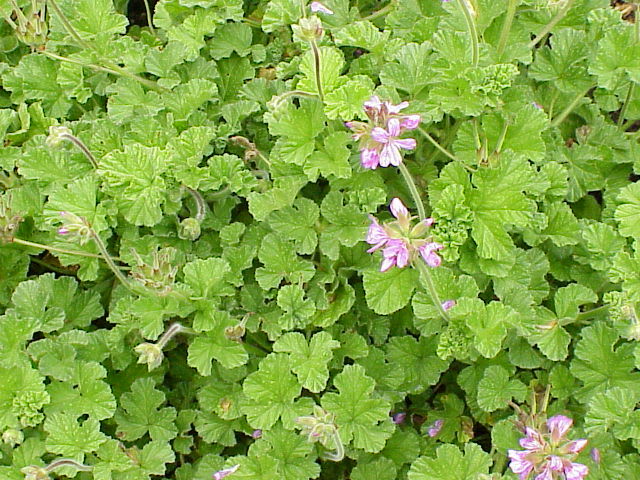Rose-scented Pelargonium, Rose Geranium, Rose-scented Geranium
Pelargonium capitatum

🌿 Morphology
🌞 Growing conditions
🌍 Origin and family
🌾 Uses
Warning: Despite the care taken in writing this sheet, it is essential to cross-reference sources before using or consuming any plant. When in doubt, consult a qualified professional
Permaculture uses
Rose-scented pelargonium is used for its aromatic leaves, which can be infused in teas, used in desserts, and added to potpourri. The essential oil is used in aromatherapy and perfumery. In the garden, it acts as a companion plant, deterring certain pests. Some cultivars have stronger scents or different floral colors.
Permapeople description
Pelargonium capitatum, known as rose-scented pelargonium, is a species of geranium with rose-scented leaves.
Botanical description
Pelargonium capitatum is a low-growing, spreading perennial shrub native to South Africa. It reaches heights of 1-3 feet and spreads similarly. The leaves are round to kidney-shaped, softly hairy, and emit a strong rose scent when crushed. The flowers are small, clustered in dense umbels, and typically pink or mauve in color. The plant has a sprawling habit, forming dense mats. It prefers well-drained soil and full sun to partial shade.
Companion planting
Rose-scented pelargonium is believed to deter certain pests, such as aphids and whiteflies, making it a useful companion plant in vegetable gardens and around other susceptible plants. There are no known strongly negative companion plants.
Propagation methods
Propagation is primarily done through stem cuttings, which root easily in water or well-draining soil. Seed propagation is also possible, although cultivars may not come true from seed. Division of established plants can also be used to create new plants.
History and traditions
Originally from South Africa, rose geraniums were introduced to Europe in the 17th century. Historically, the plant has been used medicinally for its antiseptic and anti-inflammatory properties. It's been used in perfumes, soaps, and cosmetics for its rose-like fragrance. In folk medicine, it's been used to treat skin ailments and digestive issues.
Usage calendar
Flowering typically occurs from spring to fall. Harvesting of leaves for culinary or medicinal use can occur throughout the growing season. Cuttings can be taken in spring or summer. Planting is best done in spring after the last frost.
